Key Takeaways
Skyscanner’s success lies in aggregation and user trust. It seamlessly connects millions of travelers to flights, hotels, and car rentals through transparent data and an intuitive design.
AI, ML, and AR are redefining travel experiences. From predictive pricing to personalized trip suggestions, these technologies are the backbone of next-gen travel apps.
To develop a travel app like Skyscanner, focus on robust APIs, real-time synchronization, secure payments, and a clean, intuitive user interface.
Cost varies based on scale, features, and tech stack. Expect a range between $30,000–$150,000, depending on complexity and integration depth.
Partnering with seasoned app experts like JPLoft ensures strategic guidance, innovative design, and reliable execution for launching high-performing travel apps.
Skyscanner has redefined how travelers search, compare, and book trips, all within one seamless platform. It brings together flights, hotels, and car rentals in real time, making travel planning effortless and cost-efficient. The app’s success lies in its smart use of automation, AI, and data-driven personalization that keeps users coming back.
So, how to develop a travel app like Skyscanner?
By understanding its core structure, features, and underlying technologies, you can create a similar platform that offers users intuitive travel planning, real-time data access, and a smooth booking experience.
This guide explores how such an app works, the key features to include, development steps, technologies behind it, cost insights, and more, offering a clear roadmap to build your own standout travel platform.
Understanding the Skyscanner App: What Makes It So Popular?
Skyscanner is one of the best travel apps that helps users find and compare flights, hotels, and car rentals in one place. It operates as a meta-search platform, gathering real-time data from airlines, OTAs, and travel agencies to show users the most competitive prices, without booking fees or hidden charges.
1. Why Travelers Love Skyscanner?
-
Transparency: Real-time fare comparisons make decision-making simple.
-
Ease of Use: Its clean interface and smart filters (like flexible dates or nearby airports) save time.
-
Personalization: AI-powered recommendations adapt to user behavior and preferences.
-
Speed: Optimized APIs ensure quick data fetching and seamless results.
2. What Makes It a Model for App Creators?
For those planning to create an app like Skyscanner, studying its system offers clear direction. Its modular architecture, global reach, and multi-service design make it a great blueprint for anyone exploring how to create a travel app with scalability and reliability.
Skyscanner proves that simplicity, accuracy, and personalization drive loyalty, not just discounts. Any new travel platform aiming to replicate its success should prioritize those fundamentals from day one.
How Does an App like Skyscanner Work Behind the Scenes?
Ever wondered how Skyscanner pulls off those lightning-fast flight searches across hundreds of airlines? The secret lies in its meta-search engine architecture, designed for scale, accuracy, and speed. Let’s break it down simply
1] Aggregation of Real-Time Data
An app like Skyscanner collects live data from airlines, travel agencies, and booking platforms using APIs. This is where data aggregation meets smart filtering, ensuring users see the most relevant flight options instantly.
2] Fare Comparison Algorithm
At the heart of Skyscanner-like app development is a powerful algorithm that compares prices, availability, and routes from multiple vendors in real time. This approach mirrors the predictive pricing systems used by other travel apps that help users find the best deals efficiently.
3] Search, Filter & Recommendation Engine
Once data is collected, machine learning models process it to recommend ideal flight options based on user intent, past preferences, and price alerts. This is what makes it so efficient when you plan to develop an app like Skyscanner that adapts to travelers dynamically.
4] Redirection & Partner Integration
Unlike booking platforms, Skyscanner redirects users to third-party sites to complete transactions. This ensures it remains commission-based while maintaining trust and transparency, an effective model for sustaining revenue while keeping the user experience simple and secure.
5] Secure Payments and User Experience
Even though Skyscanner doesn’t process direct payments, its integrations prioritize secure transitions between platforms. That’s a key principle for anyone exploring how to create a flight booking app that values user safety.
In short, if you want to make an app like Skyscanner, remember it’s all about connecting travelers, data, and deals, seamlessly.
Why Build a Travel App like Skyscanner?
The travel industry is evolving faster than ever, and apps like Skyscanner are at the center of that transformation. But what makes it such an appealing model for businesses and startups? Let’s find out.
1. Rapidly Expanding Travel Tech Market
The global travel app market is projected to grow significantly in the next few years, driven by personalization, mobile convenience, and AI-driven experiences. Following travel app development trends, more businesses are investing in flight and hotel aggregators that simplify planning and booking. This makes it a prime moment to develop a travel app like Skyscanner that meets these digital expectations.
2. Strong Monetization Potential
Skyscanner proves that a single platform can earn from ads, affiliate partnerships, and bookings, without even selling tickets directly. For businesses exploring how to build an app like Skyscanner, this model provides scalable revenue opportunities without heavy operational costs.
3. Trust Through Secure Integrations
Users today expect security as much as savings. When you plan how to develop a travel app like Skyscanner, integrating advanced authentication, encryption, and API protection becomes crucial. Reviewing a travel app security guide ensures the platform handles user data safely while maintaining performance.
4. Access to Skilled Development Partners
To bring such a vision to life, collaborating with a trusted mobile app development company in the UK can help businesses navigate design, architecture, and compliance efficiently, ensuring a seamless and compliant travel experience for users worldwide.
Features to Include in an App like Skyscanner
If you’re planning to create an app like Skyscanner, your feature list needs to strike a balance between functionality, user delight, and conversion. Travelers expect not just convenience but intelligence, the kind that predicts, personalizes, and simplifies their journey.
Below are the top travel app features that make Skyscanner (and its competitors) stand out.
► Flight, Hotel & Car Search Integration
Allow users to search across multiple services in one place. For a holistic experience, integrate APIs from airlines, hotels, and rental platforms. This all-in-one setup mirrors the convenience travelers appreciate in multi-service booking apps that simplify trip planning from start to finish.
► Advanced Filters & Sorting
Users value time and control. Offer filters for date flexibility, stops, price, duration, airline preference, and nearby airports. This makes navigation frictionless and helps you develop an app like Skyscanner that feels intuitive from the first tap.
► AI-Powered Recommendations
AI can predict fare drops, recommend budget-friendly routes, and tailor suggestions based on travel history. This intelligent personalization helps your app compete with industry leaders while elevating user satisfaction.
► Price Alerts & Deal Notifications
Real-time fare alerts are among the most engaging retention tools. They encourage users to revisit the app, ensuring higher engagement and brand loyalty, a cornerstone in Skyscanner-like app development.
► Multi-Language & Multi-Currency Support
If your goal is to scale globally, you can’t ignore localization. Offer prices in regional currencies and support popular languages. This enhances trust and usability for international travelers.
► Secure Payment Gateway
Travel bookings involve sensitive data. Implement PCI DSS-compliant payment gateways, encryption protocols, and secure tokenization. These ensure every transaction remains safe and smooth.
► Interactive Map View
Help users visualize destinations, available hotels, or nearby attractions directly on a map. It improves discoverability and makes trip planning more engaging.
► Booking Management & E-Tickets
Enable users to manage itineraries, cancellations, or reschedules effortlessly. Instant e-ticket access improves the post-booking experience and builds trust.
► Hotel & Stay Reviews
Reviews drive booking decisions. Integrate authentic ratings and user-generated content, similar to models explored in how to build a hotel booking app, to build credibility and retention.
► Offline Access
Allow users to view saved trips and downloaded tickets even without internet access, a small feature with a big impact for travelers in low-connectivity zones.
► AI Chat Support
Integrate AI chatbot development services to build smart assistants for customer support, helping users with bookings, cancellations, or policy queries instantly.
► Analytics Dashboard (Admin Panel)
For app owners, an analytics dashboard tracks trends, engagement, and user behavior, helping optimize campaigns and pricing dynamically.
In short, if you aim to develop an app like Skyscanner, prioritize these must-have features to combine efficiency, personalization, and reliability. Together, they form the foundation of any competitive travel platform.
|
Feature |
Description |
Why It Matters |
|
Flight, Hotel & Car Search Integration |
Combine multiple travel services, flights, hotels, car rentals, into one streamlined platform. |
Gives users an all-in-one experience without switching apps. |
|
Advanced Filters & Sorting |
Let users refine results by destination, price, duration, airline, or travel class. |
Enhances usability and helps users find what they need faster. |
|
AI-Powered Recommendations |
Use AI to suggest routes, destinations, and price predictions based on preferences. |
Adds personalization and improves decision-making. |
|
Price Alerts & Deal Notifications |
Notify users of fare changes or discounts in real time. |
Keeps users engaged and drives retention. |
|
Multi-Language & Multi-Currency Support |
Enable travelers to browse in their native language and pay in local currency. |
Enable travelers to browse in their native language and pay in local currency. |
|
Secure Payment Gateway |
Use encrypted payment APIs and tokenization to protect transactions. |
Ensures secure, PCI DSS–compliant payments. |
|
Interactive Map View |
Offer a visual map for exploring destinations and accommodation options. |
Makes trip planning more interactive and engaging. |
|
Booking Management & E-Tickets |
Centralize bookings, cancellations, and e-tickets for easy access. |
Simplifies post-booking user experience. |
|
Hotel & Stay Reviews |
Integrate verified reviews and user-generated ratings. |
Helps travelers make informed decisions. |
|
Offline Access |
Allow offline access to saved tickets and itineraries. |
Supports travelers in low-connectivity areas. |
|
AI Chat Support |
Integrate virtual assistants for instant customer help. |
Reduces service delays and enhances satisfaction. |
|
Analytics Dashboard (Admin Panel) |
Give admins control to track performance, user activity, and metrics. |
Provides insights for marketing and app optimization. |
How to Develop an App like Skyscanner?
Building a powerful travel aggregator like Skyscanner requires the perfect mix of user-first design, robust architecture, and real-time data handling. Here’s a complete breakdown of how to approach development, from concept to launch.
Step 1: Define Core Objectives and Features
Start with a clear product strategy, and identify what makes your travel app stand out. Will it focus on flights only, or integrate hotels, rentals, and activities? Define your target audience, business model, and platform scope early to shape your app roadmap effectively.
Step 2: Wireframe and Design the User Experience
When you design a travel app, prioritize intuitive navigation and minimal booking steps. Use UX wireframes to visualize the customer journey, from search to checkout. Skyscanner’s success lies in a clutter-free interface with smart filters, predictive results, and easy comparisons; the design should reflect this simplicity.
Focus on responsive layouts, clear typography, and vibrant visuals that evoke trust and excitement in travelers.
Step 3: Choose the Right Tech Stack
A stable mobile app tech stack determines your app’s speed, reliability, and scalability.
|
Component |
Recommended Stack |
Purpose |
|
Frontend |
Flutter, React Native |
Cross-platform development for Android & iOS |
|
Backend |
Node.js, Django, or Ruby on Rails |
Robust API handling and server logic |
|
Database |
PostgreSQL, MongoDB |
Manage flight and user data efficiently |
|
APIs |
Amadeus, Skyscanner APIs, Travelpayouts |
Real-time flight and hotel data |
|
Cloud Hosting |
AWS, Google Cloud |
Secure, scalable infrastructure |
|
Payment Gateway |
Stripe, PayPal, Razorpay |
Multi-currency and global payment integration |
Selecting an efficient travel app tech stack helps ensure smooth performance under high loads and global user access.
Step 4: Integrate APIs and Data Aggregation
This is the heart of a travel aggregator app. Integrate flight, hotel, and car rental APIs to deliver up-to-date listings. Use caching mechanisms to reduce load time and ensure real-time pricing accuracy.
Build an API management layer to handle synchronization, rate limits, and error recovery seamlessly.
Step 5: Focus on Testing and Quality Assurance
A detailed travel app testing process helps ensure your app’s functionality, security, and performance are bulletproof.
Test across:
-
Functional (search, booking, filters)
-
Performance (load speed, stress testing)
-
Security (data encryption, GDPR compliance)
-
Usability (A/B testing for UX improvements)
Comprehensive testing ensures smooth bookings, quick load times, and zero transaction errors.
Step 6: Prioritize Data Security and Compliance
Security is a must for travel apps dealing with sensitive user and payment data. To ensure robust mobile app security, developers should implement SSL encryption, multi-factor authentication, and tokenized payment systems that safeguard user transactions from potential breaches. Additionally, following global standards like GDPR and PCI DSS is essential to maintain compliance and protect personal information.
Step 7: Launch and Continuous Optimization
Once the MVP is tested, launch the app across platforms and track early performance metrics, installs, conversions, and retention. Gather user feedback and roll out updates regularly. Post-launch analytics help optimize routes, pricing visibility, and UI consistency.
Step 8: Partner with Experts for Mobile App Design and Development
Collaborate with an experienced team for mobile app design and end-to-end development. They ensure quality, scalability, and feature alignment with your business goals. Continuous collaboration between designers, developers, and QA engineers ensures your app evolves seamlessly post-launch.
Technologies Powering an App like Skyscanner
Behind every smooth flight search or hotel comparison lies a powerful ecosystem of technologies working in harmony.
Modern travel aggregators like Skyscanner rely on AI, blockchain, AR, and automation to deliver real-time accuracy, personalization, and trust. Let’s explore the core technologies that make it happen.
1. Artificial Intelligence (AI) for Smart Recommendations
AI plays a massive role in travel personalization. By analyzing user behavior, preferences, and booking patterns, AI-driven systems predict optimal flight routes, price drops, and best times to book.
AI in hospitality goes a step further, offering tailored experiences such as dynamic pricing, virtual assistants, and smart itinerary planning. If you aim to create an AI app for travel, focus on integrating intelligent chatbots, predictive search, and automated customer support.
Example: Skyscanner’s AI algorithms help forecast flight prices weeks in advance, letting users book at the perfect moment.
2. Blockchain for Secure and Transparent Bookings
Integrating blockchain in travel apps enhances transparency and eliminates booking fraud. It ensures immutable records for transactions, customer identity verification, and loyalty points management.
Smart contracts simplify payments between airlines, hotels, and users, cutting out intermediaries and reducing operational costs.
According to Amadeus Research (2024), blockchain adoption in travel is set to grow by 30% annually due to its potential to prevent data tampering and fraudulent bookings.
3. Augmented Reality (AR) for Immersive Experiences
AR in travel apps is redefining how travelers explore destinations before booking. Users can preview hotel interiors, nearby attractions, or airplane cabins using 3D visualization.
This immersive experience not only enhances engagement but also reduces post-booking dissatisfaction.
For example, integrating AR-based hotel tours can boost user trust and conversion rates by up to 40%.
4. Cloud and Big Data for Scalability
Skyscanner-like apps process millions of search queries daily. Cloud infrastructure ensures seamless scalability and uninterrupted uptime, while big data analytics helps developers understand global travel trends, optimize offers, and improve pricing models.
5. Partnering with AI App Development Experts
To execute these technologies effectively, collaborating with an experienced AI app development company is key. They help design robust architectures, integrate smart systems, and future-proof your travel solution with scalable AI-driven modules.
What’s the Cost to Build a Travel App like Skyscanner?
The cost to build a travel app like Skyscanner depends on multiple factors, such as the app’s complexity, design quality, integrated APIs, and your development team’s location. Whether you’re creating a minimal MVP or a fully functional global aggregator, understanding the cost to create a travel app breakdown helps plan your budget strategically.
► Average Cost Range
On average, the cost to develop a travel app like Skyscanner ranges between $25,000 and $150,000+, depending on features, tech stack, and scalability.
Here’s a quick overview:
|
App Type |
Approx. Cost (USD) |
Development Timeline |
|
Basic MVP (Flight Search + Booking) |
$25,000 – $45,000 |
3–5 months |
|
Mid-Level App (With Hotels & Car Rentals) |
$50,000 – $90,000 |
6–8 months |
|
Full-Scale Global Aggregator |
$100,000 – $150,000+ |
9–12 months |
Note: Costs vary based on APIs used (Amadeus, Sabre, Skyscanner API) and custom features like AI-driven recommendations or dynamic pricing.
► Key Cost Factors
-
App Design & UX: Intuitive, travel-friendly design adds around $5,000–$15,000 to development.
-
APIs & Integrations: Integrating multiple flight, hotel, and car booking APIs can account for 20–25% of the total cost.
-
AI & Personalization: Smart algorithms for fare prediction, itinerary suggestions, and user analytics may add $10,000–$25,000.
-
Security & Compliance: Encryption, data privacy, and PCI DSS compliance can cost $3,000–$10,000.
-
Testing & Maintenance: Ongoing updates, bug fixes, and version upgrades may require 15–20% annually of the total build cost.
► Reducing Development Costs
If you want to develop an app like Skyscanner efficiently, consider:
-
Building an MVP first to validate your concept.
-
Using ready-made SDKs for maps, chat, and analytics.
-
Partnering with a reliable offshore team for balanced cost and quality.
For better context, comparing your project with other leading travel apps can help refine your cost expectations and feature priorities.
Challenges to Build an App like Skyscanner
When you plan to develop a travel app like Skyscanner, you quickly realize it’s not just another flight search tool; it’s a complex, high-performing travel ecosystem.
From technical integration to market competition, teams face numerous roadblocks during Skyscanner-like app development. Let’s explore the key challenges and how to overcome them effectively.
1] Data Integration & API Reliability
A major travel app development challenge lies in connecting with multiple third-party APIs from airlines, hotels, and car rental partners. These APIs often differ in response speed, data format, and reliability, leading to inconsistent pricing and availability.
Solution: Use robust caching systems, fallback APIs, and real-time synchronization to ensure users always see the most accurate and updated data.
2] Market Competition & Brand Differentiation
Even if you build an app like Skyscanner, breaking through a saturated market is tough. Established players dominate SEO rankings and brand recall.
Solution: Focus on a unique value proposition, offer features like personalized AI-driven recommendations, exclusive local deals, or loyalty integrations that cater to niche audiences.
3] Security & User Trust
With millions of travelers sharing sensitive payment details, security is paramount. Many online travel apps fail because of data breaches or inadequate encryption measures.
Solution: Integrate SSL encryption, secure payment gateways, and tokenization methods while ensuring compliance with global data privacy laws like GDPR and PCI DSS.
4] Scalability & Performance
Developing an app like Skyscanner means handling huge traffic spikes during travel seasons. Without a scalable architecture, latency and crashes can easily occur.
Solution: Adopt microservices, cloud deployment, and auto-scaling to maintain performance as your user base expands globally.
5] Cost Overruns & Project Delays
Many startups underestimate the budget needed to build a mobile app of this scale. Scope creep, API integration issues, and delayed testing often inflate costs.
Solution: Prioritize an MVP approach, set milestone-based budgets, and maintain strong communication between the design, dev, and QA teams.
6] User Retention & Loyalty
Retaining users is just as challenging as acquiring them. Travelers often install an app for one trip and never return, leading to high churn.
Solution: Implement loyalty programs, AI-based notifications (like fare alerts and personalized trip offers), and gamified referral systems. A Skyscanner-like app development strategy should focus not just on search and booking but also on creating memorable post-booking experiences that build long-term trust.
How Do Travel Apps like Skyscanner Make Money?
Ever wondered how apps like Skyscanner generate revenue when most of their services appear free to users? The secret lies in a mix of affiliate commissions, advertising, data partnerships, and premium integrations.
Let’s break down the most common travel app monetization strategies used by top travel aggregators today.
1. Affiliate Commission (Core Model)
This is Skyscanner’s primary revenue stream. When users book a flight, hotel, or car rental through the app, Skyscanner earns a commission from its travel partners, airlines, OTAs (Online Travel Agencies), or hotel booking sites.
Example: If a user books a $500 flight via Skyscanner’s affiliate link, the platform may earn a 3–5% commission without charging the user extra.
2. Pay-Per-Click (PPC) Advertising
Skyscanner also profits from pay-per-click models, where travel brands bid for placement on search results. Every time a user clicks on a promoted deal or ad, the advertiser pays a fee.
Why it works: This creates a consistent passive income stream while keeping the app free for travelers.
3. In-App Advertising
Beyond PPC, Skyscanner displays targeted banner and native ads from airlines, tour operators, and travel gear brands. The ads are contextually relevant, showing, for instance, travel insurance when booking a flight.
Monetization Tip: Balance ad frequency to avoid disrupting user experience.
4. API Licensing & Data Services
Some travel aggregators license their proprietary API or analytical data to other platforms. The aggregated flight and fare data becomes a valuable product for travel startups and booking engines.
This is an emerging model among global travel players building B2B revenue channels.
5. Subscription & Premium Services
Though Skyscanner itself is free, some similar apps offer premium subscriptions for ad-free experiences, early access to flash deals, or AI-based fare predictions.
Pro Tip: Apps that develop a travel app like Skyscanner often use hybrid models, mixing affiliate revenue with paid premium tiers.
6. Sponsored Listings & Brand Collaborations
Partnered airlines or agencies can pay to be listed at the top of search results or within specific campaigns. These co-marketing deals generate additional exposure and direct revenue for the app.
Work with JPLoft to Launch a Skyscanner-Style App
Ready to bring your travel app idea to life? Partner with JPLoft, a leading travel app development company, to design, build, and scale your own Skyscanner-style platform. Our team specializes in AI-powered search systems, intuitive booking experiences, and seamless multi-API integrations that drive real user engagement.
From concept to post-launch support, we turn your travel vision into a market-ready, revenue-generating product.
Let’s create the next big name in travel tech.
Conclusion
Building an app like Skyscanner isn’t just about flight comparisons; it’s about creating a smarter, connected travel experience that users can trust. From AI-driven personalization to seamless booking engines, every feature shapes how travelers explore the world.
As travel tech evolves, opportunities for innovation are limitless. Whether you’re a startup or an established brand, developing your own intelligent, user-first travel app can position you at the forefront of the digital travel revolution.
The journey starts with an idea, and the right development strategy turns it into something travelers rely on every day.
FAQs
To develop an app like Skyscanner, start by defining travel search features, APIs for flight, hotel, and car data, and a strong backend for real-time pricing. Use AI for personalized recommendations, integrate secure payment gateways, focus on intuitive UI/UX, and ensure scalability with cloud infrastructure and advanced analytics.
The development timeline for a Skyscanner-style app typically ranges from 5 to 9 months, depending on the complexity, feature set, and integrations. MVP versions can be launched in about 4 months, while a full-scale platform with APIs, AI recommendations, and multi-language support may take longer.
An ideal stack includes React Native or Flutter for cross-platform support, Node.js for backend scalability, MongoDB or PostgreSQL for databases, and AWS or Google Cloud for deployment. Adding AI and machine learning modules can enhance personalization and predictive pricing accuracy.
Offer features that go beyond flight search, like dynamic pricing alerts, personalized itineraries, AI-based suggestions, AR-powered hotel previews, and voice search. A sleek design, fast loading time, and secure payment gateway are also key to outperforming the competition.
Some common hurdles include real-time API synchronization, data security, and user trust. Managing multiple APIs (airlines, hotels, car rentals) without performance lag and ensuring compliance with privacy regulations like GDPR are critical challenges developers must address early.
Post-launch maintenance costs can range from 15% to 25% of the initial development budget annually. This covers server costs, API updates, bug fixes, feature improvements, and performance monitoring, ensuring your app stays competitive and glitch-free.





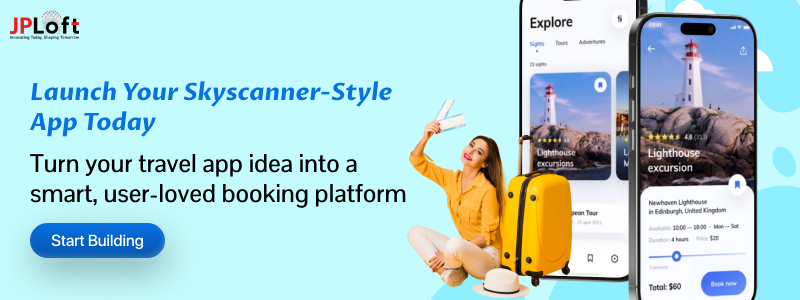
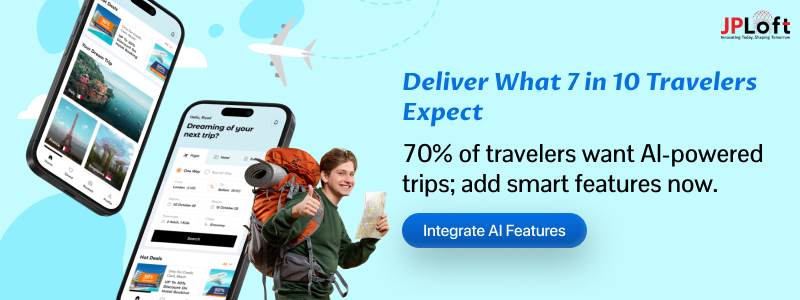

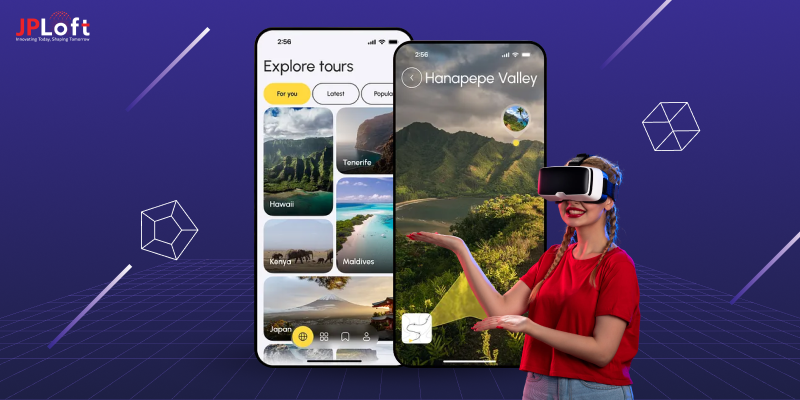
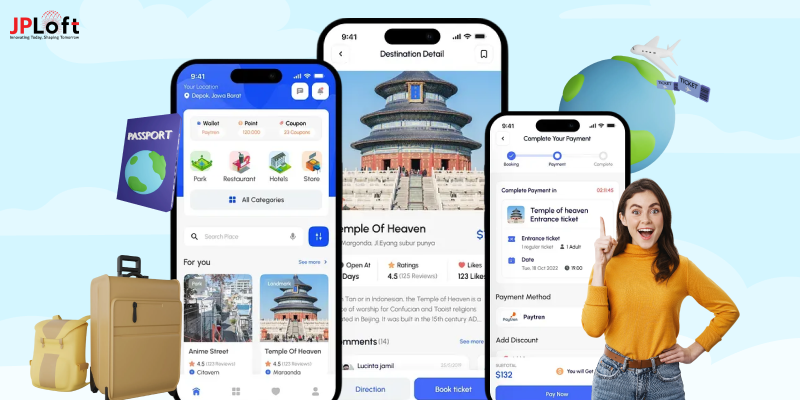
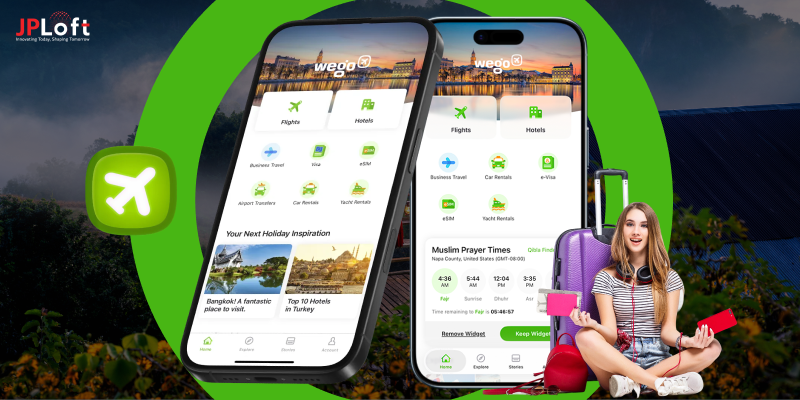


Share this blog